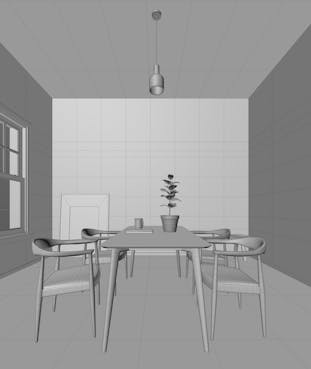3D visualization
Gone are the days when content creation relied solely on traditional photography and animation. With 3D visualization, you can effortlessly transcend the limitations inherent in conventional methods.
Asset creation
The first step is to create 3D models of your products. Concerned about cost and complexity? Don't be. We efficiently produce high-detail 3D assets in bulk, ensuring they are ready for any subsequent content creation process.
Customization and applications
Once the 3D models are in place, the sky is the limit. We can tailor these models to any color, fabric, or size specification. Post-customization, these 3D models can be utilized in various ways:
- Generating high-quality still images (CGI), either as packshots or within environmental settings
- Crafting dynamic animations
- Implementing into Augmented Reality (AR) or Virtual Reality (VR) experiences
- Developing a 3D product configurator to enhance your online sales
Benefits
One of the key benefits of our 3D visualization is eliminating the need for physical inventory. We affordably create detailed 3D models that outperform traditional photography. For products with multiple configurations, like a sofa with various fabrics and colors, we generate a complete virtual inventory, even placing items in virtual settings for stunning visuals.
Who we work for
Trusted by global brands. Thousands of customers rely on Ymage for their imagery.
Create 3D visualizations
Thanks to the latest technologies, our specialists transform every detail of your product into high-quality 3D visualizations. This investment elevates the visual experience of your customers to a higher level and strongly positions your brand for the future.
1.
COMPETITIVE ADVANTAGE
In a competitive market, 3D visualizations not only make your brand unique but also memorable. By visualizing complex details and unique features, you create a powerful impression on your target audience.
2.
FLEXIBILITY & SCALABILITY
With a one-time investment in a 3D model, you can endlessly vary in presentation and application. This makes it not only cost-efficient but also extremely flexible for future marketing efforts.
3.
REALISM & IMMERSION
The lifelike quality of 3D visualizations creates a deeper emotional connection with the viewer. This contributes to a positive user experience and will significantly increase the conversion rate.
FAQ about 3D visualization
What is 3D visualization?
3D visualization is the process of creating graphical content with three-dimensional elements. It allows for a more realistic representation of objects and scenes, often used in various industries like architecture, gaming, healthcare, and retail.
How does 3D visualization work?
It involves the use of specialized software to create a 3D model. This model can then be rendered to produce images, animations, or interactive experiences that incorporate realistic lighting, textures, and materials.
Who uses 3D visualization?
A wide range of industries, including but not limited to:
- Architecture and construction
- Automotive
- Healthcare
- Retail (e.g., furniture, fashion)
- Entertainment and gaming
What are the benefits of using 3D visualization?
- Enhanced realism: Provides a more realistic representation of products or spaces.
- Cost-effective: Reduces the need for physical prototypes.
- Interactive experience: Allows for interactive demos that can be manipulated in real-time.
- Improved communication: Helps in conveying complex information more easily.
How can 3D visualization improve my sales?
- Customer engagement: Interactive 3D models can keep potential customers engaged longer.
- Informed decisions: Customers get a better understanding of the product, leading to more confident purchasing decisions.
- Virtual showrooms: Showcase a wider range of products without the need for physical space.
What is product staging?
Product staging involves setting up items in a contextual environment, often digitally, to showcase their features and how they can be used in real-life settings.
How does 3D visualization aid in product staging?
- Unlimited variants: Easily create and showcase multiple product variations.
- Contextual presentation: Place products in realistic settings to help customers visualize them in their own spaces.
- Interactive customization: Allow customers to customize products in real-time.
Why should the furniture industry use 3D visualization for product staging?
- Space planning: Helps customers and designers plan spaces more effectively.
- Reduced returns: Accurate visualizations can reduce the likelihood of returns.
- Global reach: Digital catalogs can be easily shared, expanding the customer base.
Can other industries benefit from 3D visualization and product staging?
Absolutely, industries like automotive, fashion, and consumer electronics also greatly benefit from 3D product modeling, 3D visualization and staging for similar reasons—enhanced customer experience, reduced costs, and improved sales.

